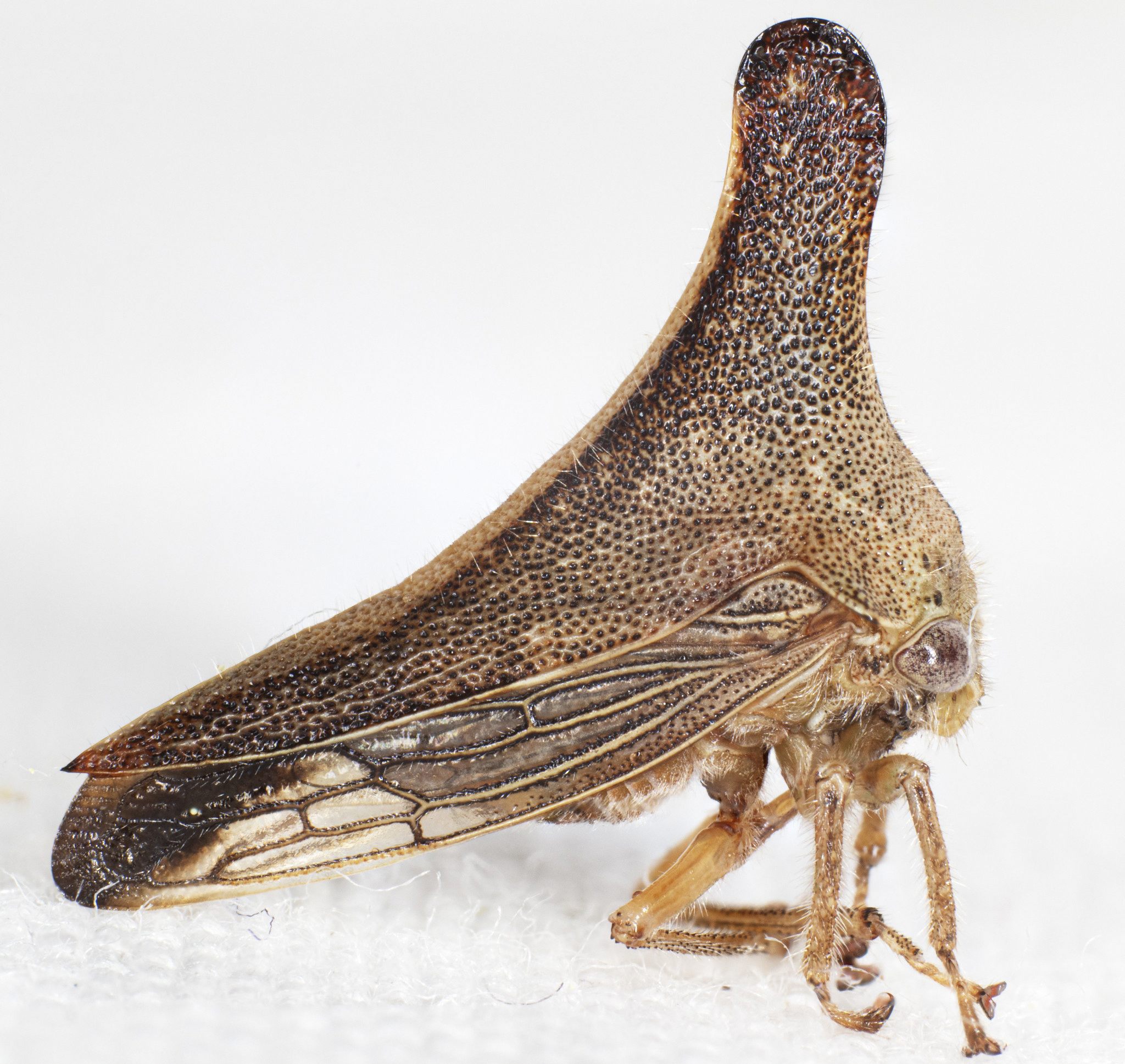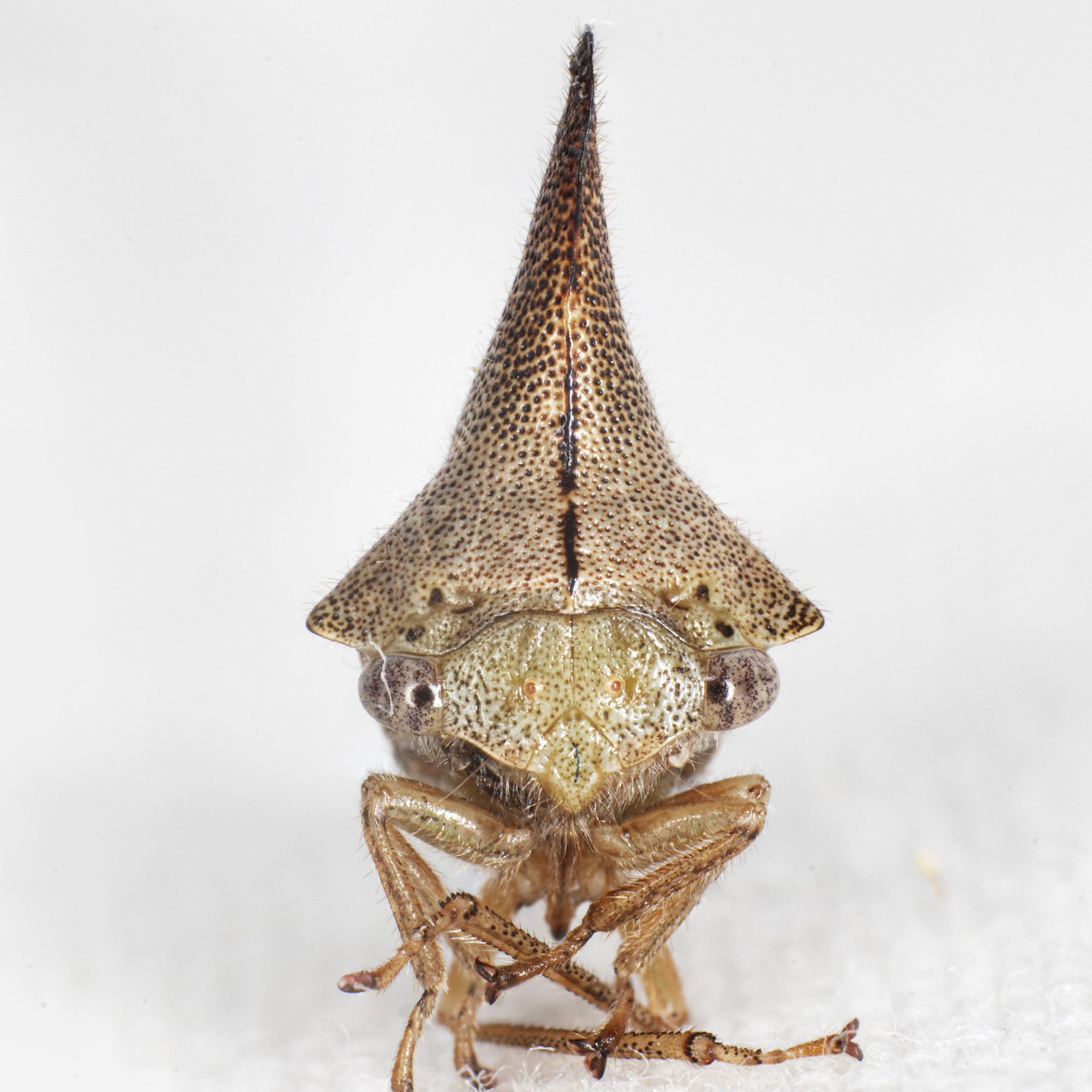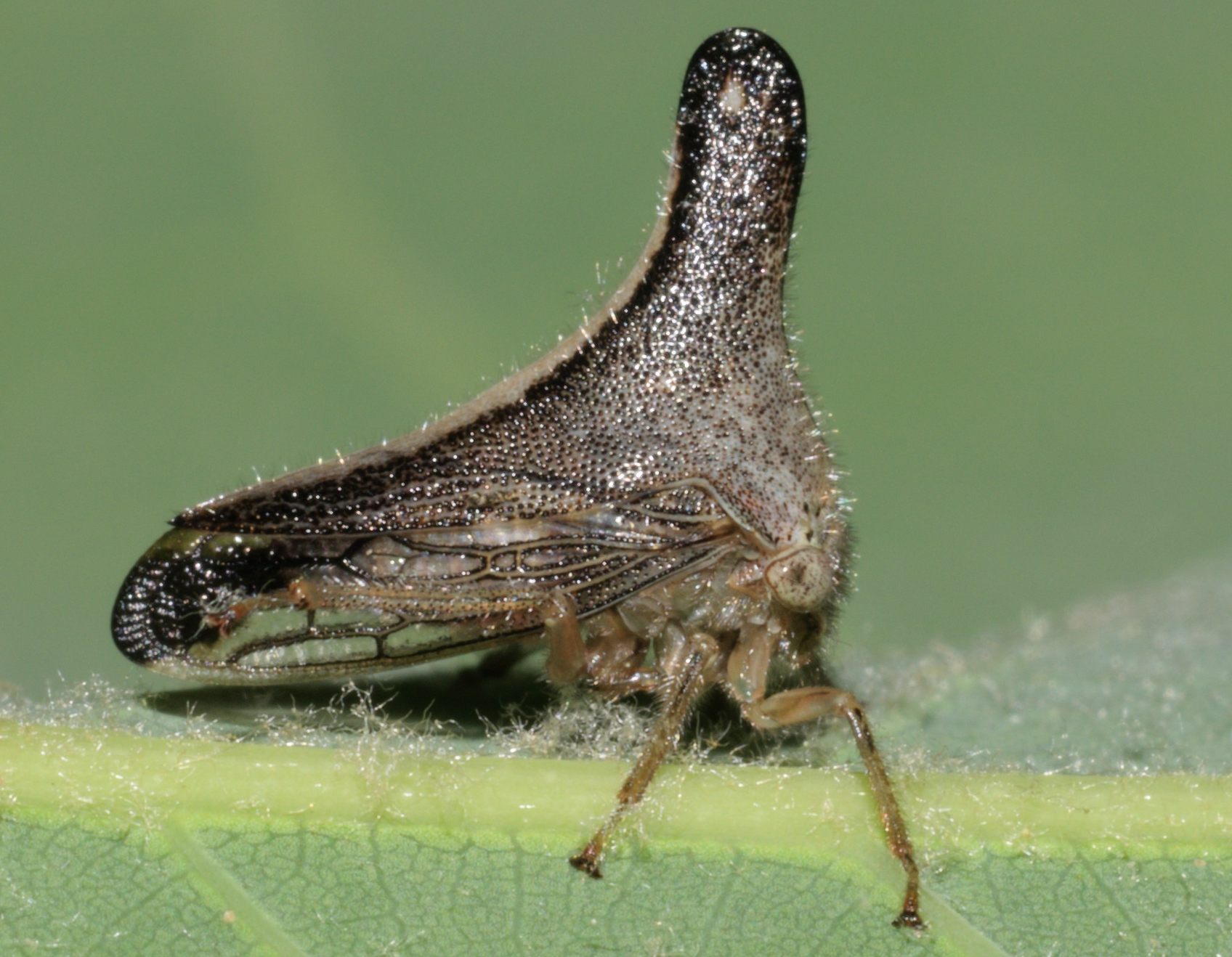| Family (Alpha): | |||
« |
 » » |
| MEMBRACIDAE Members: | NC Records | |||||
|---|---|---|---|---|---|---|
Glossonotus turriculatus - No Common Name | ||||||
 © Solomon Hendrix |  © Solomon Hendrix |  © Scott Bolick- note elongated pronotum |  © Scott Bolick |
|
Hoppers of North Carolina: Spittlebugs, Leafhoppers, Treehoppers, and Planthoppers |
| Family (Alpha): | |||
« |
 » » |
| MEMBRACIDAE Members: | NC Records | |||||
|---|---|---|---|---|---|---|
Glossonotus turriculatus - No Common Name | ||||||
 © Solomon Hendrix |  © Solomon Hendrix |  © Scott Bolick- note elongated pronotum |  © Scott Bolick |